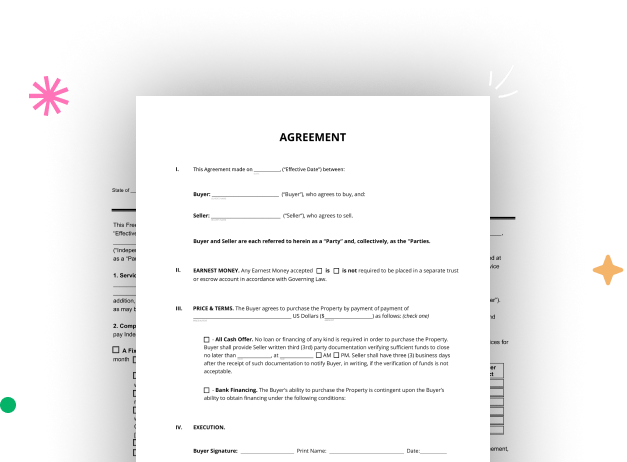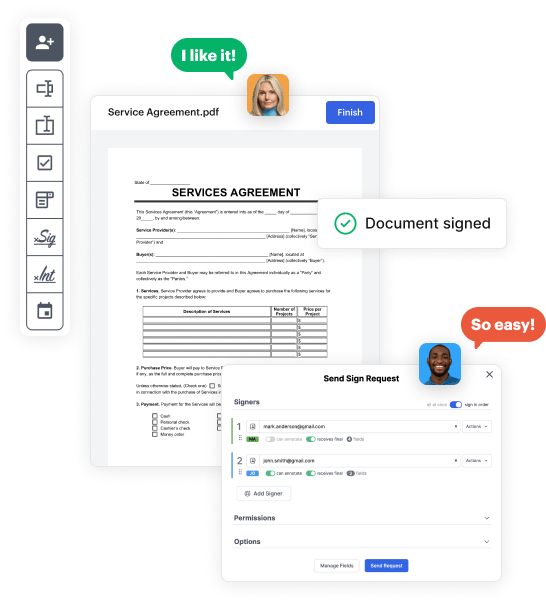

First, log in to your DocHub account. If you don't have one, you can easily register for free.
Once you’re in, head to your dashboard. This is your main hub for all document-based tasks.
In your dashboard, hit New Document in the upper left corner. Pick Create Blank Document to put together the Ohio Landlord-Tenant Legal Form from a blank slate.
Add numerous elements like text boxes, photos, signature fields, and other interactive areas to your form and assign these fields to particular individuals as necessary.
Customize your document by including guidelines or any other vital tips utilizing the text feature.
Meticulously examine your created Ohio Landlord-Tenant Legal Form for any errors or required adjustments. Take advantage of DocHub's editing tools to polish your document.
After finalizing, save your copy. You can select to retain it within DocHub, export it to various storage services, or send it via a link or email.